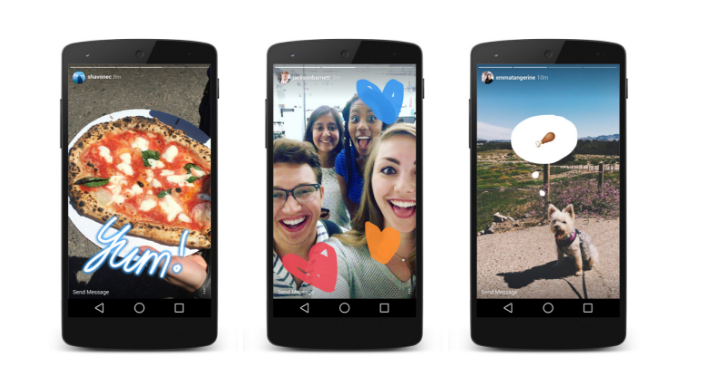I consider myself a digital native. I was fortunate to grow up with a laptop for learning.
I know computers. I’m comfortable on the internet.
While I have mixed feelings about posting family photos on Facebook, overall, I embrace that this is the ‘go-to’ for sharing infrequent captures of my littles as they grow up.
So why is it taking so much to get used to the expirable nature of Snapchat and Instagram Stories?
I get it. I understand the relevance. I totally see where curated feeds, carefully posed shots and informally formal everything would start to make anyone hungry for something more authentic, real, in the moment.
INSTANTANEOUS.
However, along with this new feature on Instagram of more transparent moments, clips and images, comes a more visible viewership previously left to the imagination. It’s possible to see who’s viewed your stories.
If you didn’t already know that, you might be wracking your brain for any accounts you wish you hadn’t been looking at.
Along with the new glimpse into who’s viewed your Story-specific content, we have another awkward feature-within-a-feature to contend with. Unlike the typical commenting system we’re so used to on Facebook, LinkedIn and even your regular old Instagram photos, within Stories if someone wants to react, their only option within the app is to send a private message to the original poster. This hardly sparks the mass conversation we’re so used to aiming for as long-standing community management minded digital folks.
So instead of our usual quest for more comments, greater likes, an avalanche of shares — we what? Tally up views? That only we can see?
Is this a turning point in social media?
Yes. Of course. This could represent a significant turning point in social media – however, this doesn’t mean we’re going to see the typical engagement measures we’ve grown to love in the past decade disappear. At least not overnight.
It might mean that we have to not only value our fans and followers who go out of their way to show active engagement, but also find a way to acknowledge and appreciate the folks passively absorbing our content too.
So what can brands do?
As a digital marketer, the ways in which we interact and engage online as a brand is largely driven by the way the folks we hope to attract are also using the same platforms. Which is why it’s impossible to entirely separate our personal experience from the learnings that would be applicable to a brand.
While we don’t know how Instagram and similar platforms will continue to evolve even in the next few months, we can start to monitor and analyze what’s happening with our previously anonymous, unidentifiable, silent fans.
Keep an eye on your lurkers. Watch how often they watch. Notice who comes back and see if anyone stands out as a potential person to engage – perhaps by liking or commenting on their photos too. Like any relationship, the brand/customer is chock-full of subtleties and nuances relating to how and when to be so forward. However, simply starting to keep lurkers on your radar as a community manager is the best first step towards making sure you catch the opportunity to establish or solidify a new connection.

